Learning from Painting, Part 5: Embracing Digital Painting
I believe in new artistic technologies. New technology create new kinds of artistic media that each have their own value. Every kind of media was once experimental and vanguard, and privileging what’s traditional today just seems arbitrary.
Yet, I started out iPad painting with my own snobbery about physical media. Having once spent countless hours in art studios and painting in situ, attempting to master the difficulties of real oil paint and real watercolor, I had a sense that “the real thing” is more valuable than the digital tools. Real paint “counts” more than digital paint.
This led me to initially avoid certain features of digital painting, especially layering. But, as I learned to work with the tools better, I came to realize the obvious: these tools are distinct media from conventional media. For example, once I buckled and started using layers, I discovered new advantages to using them, and disadvantages. Now I view the choice of layers as one more decision to make early on: different ways to decompose an image into layers can lead to very different paintings.
Perhaps what is most interesting is the ways the specific affordances of digital tools change the style of paintings. But it is also worth contemplating what is lost with digital tools.
This is the fifth part of a series of blog posts about my recent experience in digital painting and drawing. Click here for the first part.
Some features of digital painting
Here are some of the features of digital painting, and the ways that using these features changes the style of the work.
1. Total control. The most obvious benefit of digital painting is that you have total control over the pixels. You can wipe oil paint clean with your eraser, which would be impossible in real life. You can cleanly erase charcoal without worrying about the eraser tearing through the paper. No need to mix paints to get a color, just use a color picker. With undo and the ability to duplicate filers and layers, you can explore all sorts of options. The only limitation is how much time you have.
Deciding when to stop working on a physical painting was a big problem for me; often I would keep working and realize I was just making it worse, and wish I could undo the last few things I’d added. Now I easily can.
With physical media, one practices hard to get the composition to fit the shape of the paper or canvas. Objects going off the edge of the page? No problem, just make the canvas bigger!
Here’s a “happy little accident” that came from extending the canvas:
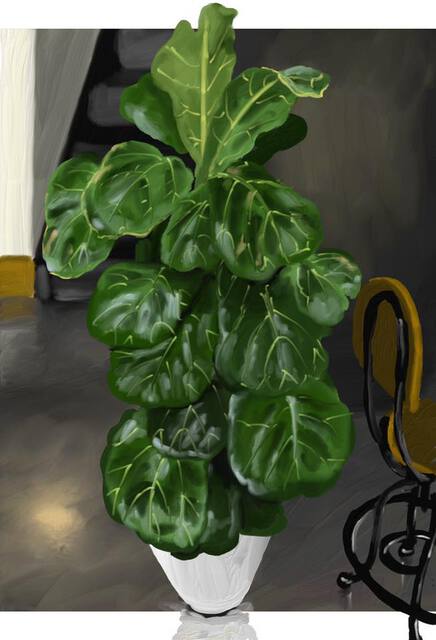
After extending the canvas and the plant, I liked the way the plant extended off the background, and chose not to extend the background.
2. Layers.
The ability to separate scenes into semitransparent overlapping layers feels transformative. You can draw a tree, then draw the scene behind the tree, then edit the tree some more, then draw some more scenery behind the tree, in ways that would be extraordinarily difficult with real media.
Here’s an example using layering both for overlap and for transparency:
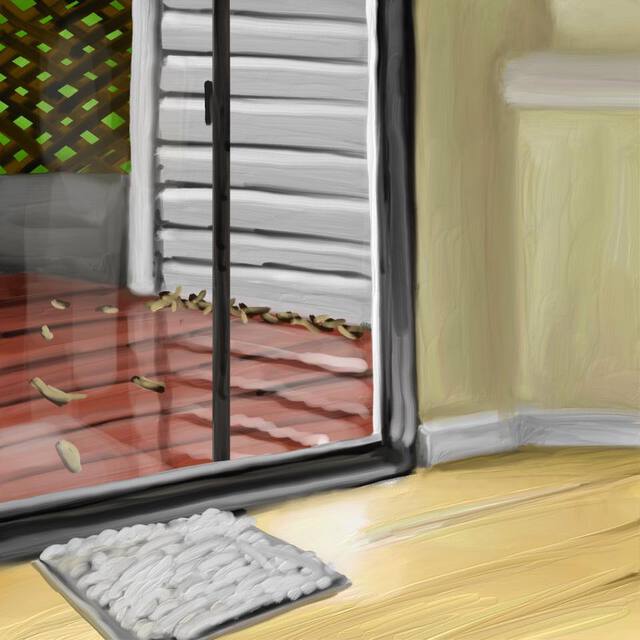
The reflections on the window are separate layers, as are the rainwater reflections on the patio; they would have been very very difficult without layers. Moreover, note how there are sharp edges between the window bar, whereas other object boundaries within a single layer are usually softer. The doormat is also on a separate layer from the floor underneath it (and apparently I didn’t think to add a shadow to keep it from floating).
Layering changes the visual style because, with natural media, it would be hard to keep the boundaries so crisp. It also saves an enormous amount of time, which itself plays a big role in style.
Here’s a more subtle example where I used separate layers for the windows on the building:
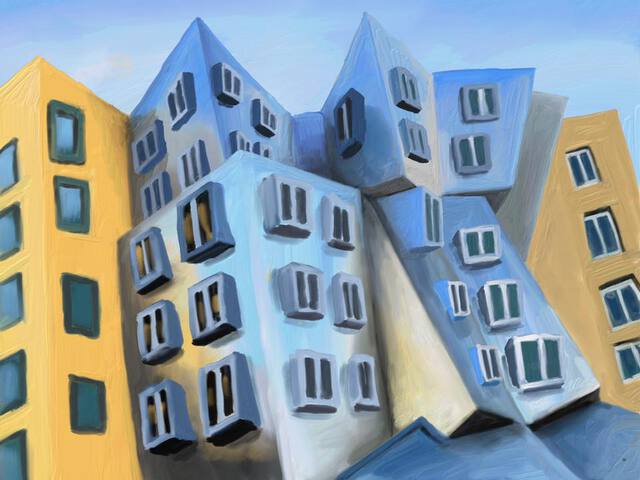
which made it easier to adjust the shading on the building even after the windows were drawn, but, as a result, they have crisper edges against the building. It is possible to soften these edges with more time and effort.
Two more examples of using layering for reflections and transparency:

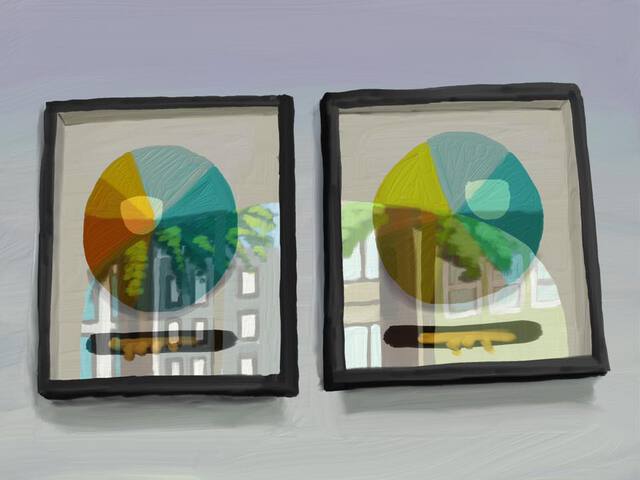
These would have been very difficult without layering.
3. Paint almost anywhere. Being able to paint almost anywhere is really liberating; I started carrying my iPad almost everywhere, often stopping to sketch or draw when something caught my eye. In constrast, buying and carrying around a big set of oil paints, canvases, and brushes is not simple. You get paint on your clothes and surroundings, and it doesn’t come off easily.
Like photographers say, “the best camera is the one you have with you.” It is essentially impossible to paint with oil paints while looking out the window of an airplane or while sitting at a bar, waiting for friends to arrive.
4. Flexibility with media. Likewise, the iPad makes it easy to choose a different media for each drawing. I can decide in the spur of the moment. Maybe a pencil drawing warmup, then an oil, then a quick pastel illustration. Sometimes I accidentally select the wrong one, and am surprised how much I like the media I didn’t intend. Imagine meaning to paint with oils in real life, and accidentally using charcoal instead.
Even better, I can mix media on the canvas. For a long time, I stuck to one medium for each drawing. Then it just came naturally, when I found myself wanting different media for different objects. Solid, semitransparent brushes were really helpful for reflections.
I started out this painting with oil paint, but found it very helpful to draw these gauzy curtains with light pencil strokes:
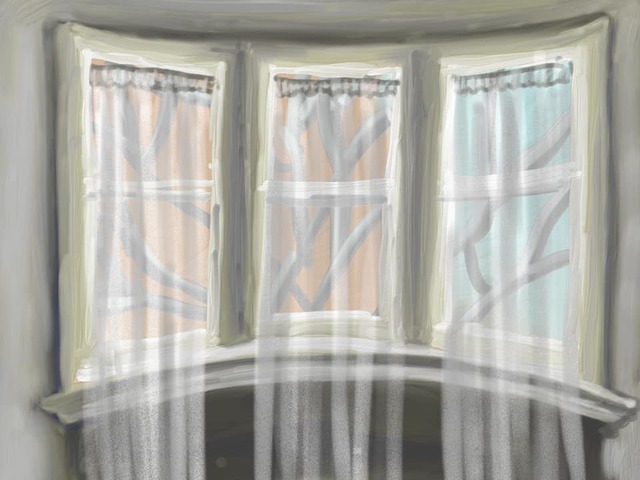
For this drawing looking out an airplane window, I really wanted solid brushes for the lights, but oil paints for the foggy background:
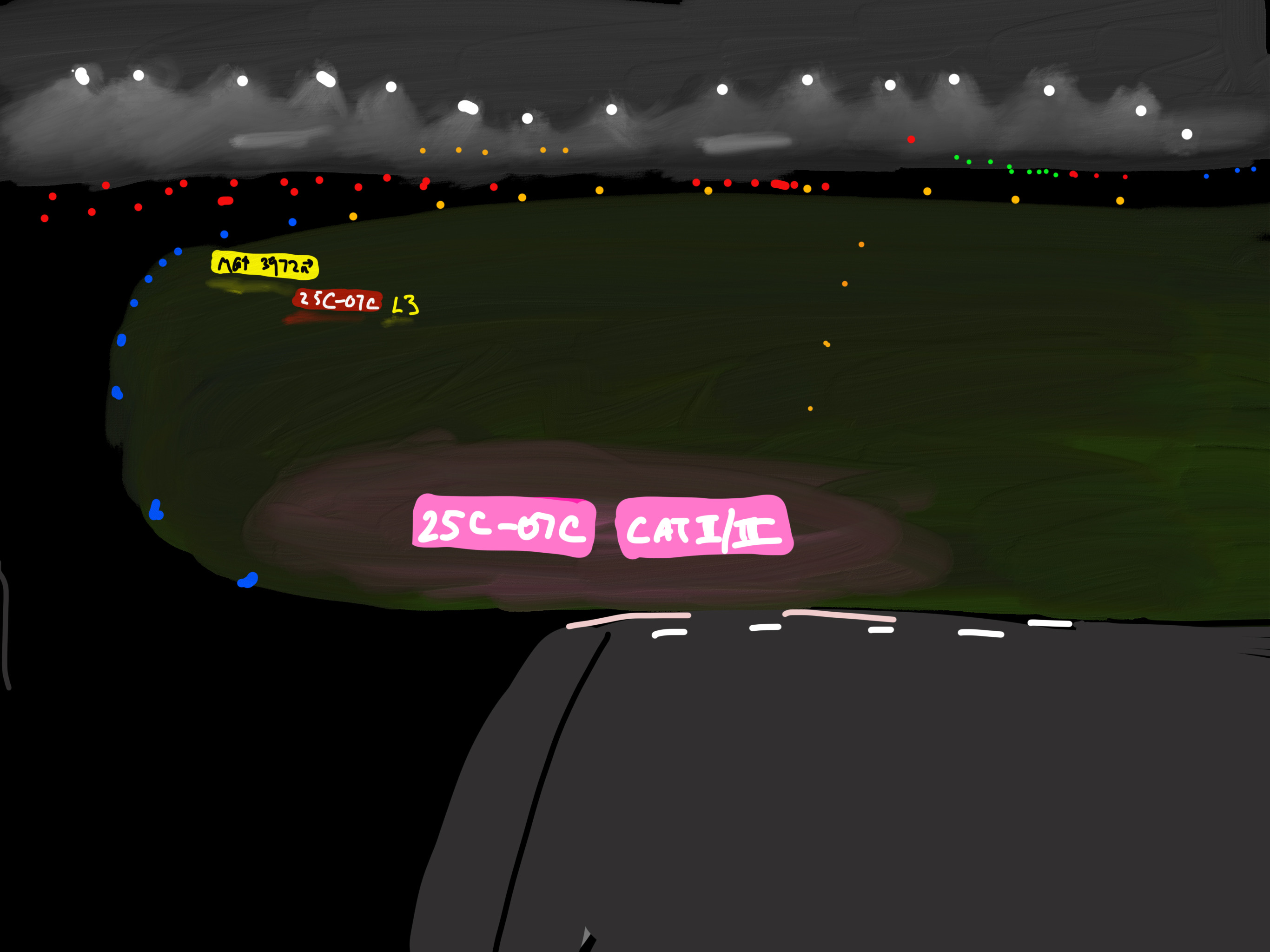
5. New media. I enjoy painting with solid color brushes that can’t exist in the physical world; they can have very distinctive looks:
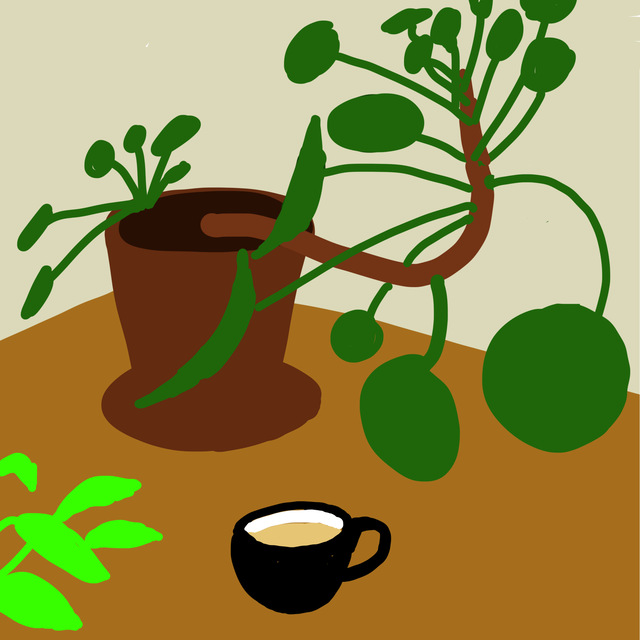
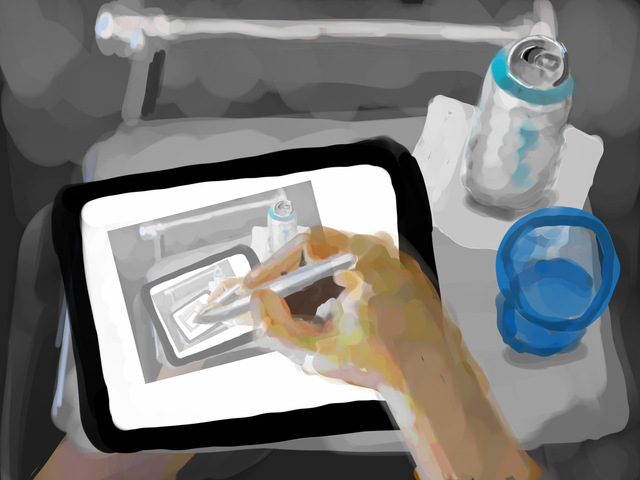

New brushes create new styles that don’t really exist with physical media.
What’s lost: arbitrary constraints
A significant advantage of real media is that there is no “undo.” Being forced to work through your mistakes helps you get better at working spontaneously, at making bold, confident strokes, and simply at getting things right the first time.
Many kinds of artists have preferred traditional media for similar reasons. For example, while I was painting in that Oxford bookstore, my friend Amanda found an essay in the bookstore in which the poet Wendell Berry rejected writing with a computer, because of the advantages of writing with a pencil. For many years, Steven Spielberg refused to switch to digital from physical film editing in part because the activity of physically cutting and splicing film requires that every edit be carefully considered.
This is a common story, of how each generation rejects whatever new innovations come after they learned how to work.
Other kinds of arbitrary constraints can be useful to force you to work in different way, to develop new skills, and explore new ideas. Drawing under time constraints is really valuable, but sometimes its worth placing arbitrary constraints for just for their own sake: draw only in monochrome, or draw with just a single line, or with only a single layer, or a single brush size, and so on.
Sometimes I even wonder if there should be software support for arbitrary constraints, e.g., settings that lets you disable layering or undo or color, or that randomly assigns you constraints as an exercise.
What’s lost: physicality
Perhaps what I miss the most about real paint is the physicality: the manipulation of physical materials, and working even more directly with your hands. The direct, unmediated mapping between your movements and how the bristles and paints interact with the canvas. No simulation, just reality. And, at the end, having a physical artifact instead of a digital file.
During the pandemic, I pulled out my old watercolors and did a bit of painting with them. I really enjoyed using them. It was like visiting an old friend. Then I put them away and went back to using my iPad.
The next post in this series is here
The paintings on this page were made between November 2019 and October 2020.